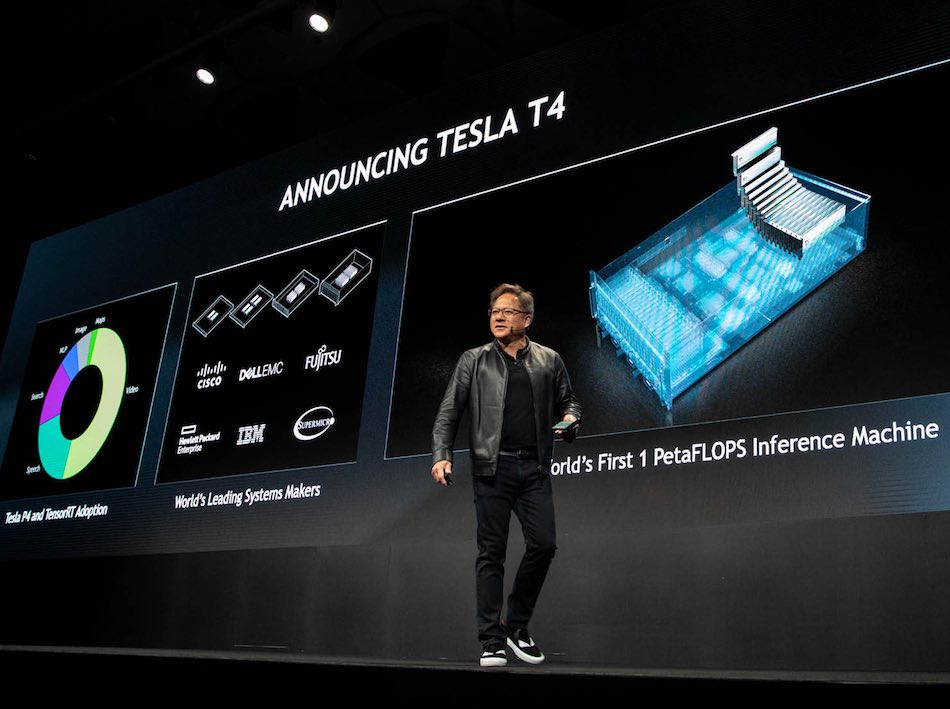 This morning at GTC Japan, NVIDIA CEO Jensen Huang announced a set new products centered around Ai and accelerated computing. Targeting Hyperscale datacenters looking to run Ai workloads, NVIDIA continues to innovate Machine Learning technologies at an unprecedented pace.
This morning at GTC Japan, NVIDIA CEO Jensen Huang announced a set new products centered around Ai and accelerated computing. Targeting Hyperscale datacenters looking to run Ai workloads, NVIDIA continues to innovate Machine Learning technologies at an unprecedented pace.
There is no question that deep learning-powered AI is being deployed around the world, and we’re seeing incredible growth here,” Huang told an audience of more than 4,000 press, partners, academics and technologists gathered on the latest stop in a GTC world tour.
Highlights include:
- NVIDIA TensorRT Hyperscale Platform: New AI data center platform delivering industry’s most advanced inference accelerator for voice, video, image, recommendation services. It features new Tesla T4 GPUs and a comprehensive set of new inference software.
- Tesla T4: World’s most advanced AI inference accelerator. Powered by Turing Tensor Cores, it brings revolutionary multi-precision inference performance to accelerate AI applications.
- TensorRT 5: Newest version of the company’s deep learning inference optimizer and runtime. Lets data scientists optimize neural networks and run them for applications such as computer vision, speech, in data centers and embedded devices.
- TensorRT inference server: Containerized microservice that enables applications to use AI models in data center production. Supports multiple models per GPU, is optimized for all major AI frameworks and scales using Kubernetes on NVIDIA GPUs.
- CUDA 10: Turing-optimized, it will include performance optimized libraries, new programming model constructs for defining program execution, enhanced graphics API interoperability.
The number of applications that are now taking advantage of deep learning are growing exponentially — hyperscale data centers can’t run just one thing — they have to run everything,” Huang said.
Huang also announced NVIDIA AGX, a series of embedded AI high-performance computers built around NVIDIA’s new Xavier processors, the world’s first processors built for autonomous machines.
This is the future brain of autonomous machines,” Huang declared





